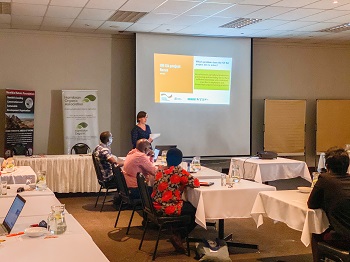
Foot and Mouth disease detected in Ohangwena and Oshikoto
Cases of Foot and Mouth disease have been detected at Ondama Yomunghete Crushpen, Okalupalona and Onehanga crush pens in the Okongo Constituency of the Ohangewena region with a second outbreak detected at Okalongo village in the Okankolo constituency of the Oshikoto region.
The disease was confirmed by the Central Veterinary Laboratory in Windhoek on 12 May. According to Ministry of Agriculture Water and Forestry Permanent Secretary, Abraham Nehemia, the ministry has advised the farmers not to move cattle, goats, sheep, pigs and other animals from these areas. “Meat, manure, hides and skins, horns, bones, trophies and other potentially infectious materials such as thatch grass, hay and crop residue should also not be moved from, into and within the infected and containment areas to any part of the country.”
He also said movement outside containment areas must be authorized by the directorate of veterinary services which will issue Red Cross movement permits for the rest of the Northern Communal Areas whose fence at Shamagorwa in the Kavango East Region is the boundary between Ndiyona and Mukwe constituencies. Roadblocks will be set up at strategic points to stop unauthorized movements of animals and animal products and for the disinfection of vehicles and shoes.
All animal movements across the Namibian-Angolan border are suspended with immediate effect and movements of animals from south of the veterinary cordon fence to the northern communal area are suspended and all movement permits that had been issued are cancelled until further notice. Any animal found to have been imported illegally into Namibia will be confiscated and maybe destroyed in accordance with the Animal Health Act No.1 of 2011.
The directorate had deployed surveillance teams to investigate the extent of the disease outbreak and to determine the source. Farmers and members of the public are requested to report any animal showing signs consistent with foot-and-mouth disease to their nearest veterinary office or police.
The signs of Foot and Mouth disease include salivation, the animal not eating, limping, reluctance to move, fever, blisters and ulcers on the tongue, gum and on the hooves. A vaccination programme has been launched and farmers are requested to bring their cattle to the nearest crush pen when requested to do so.













































